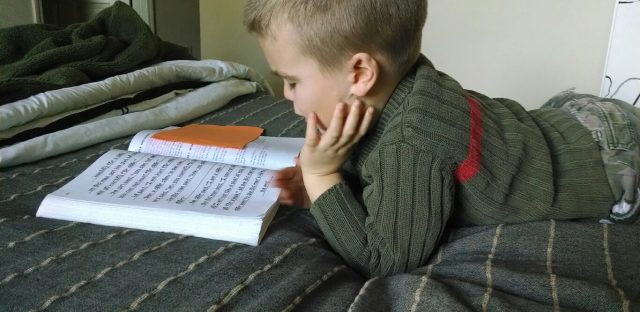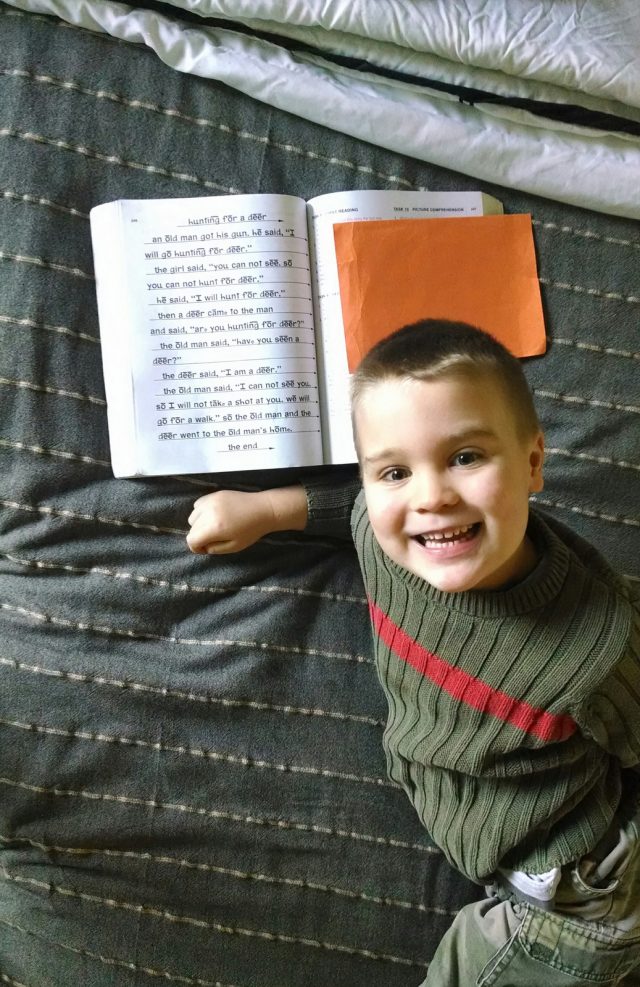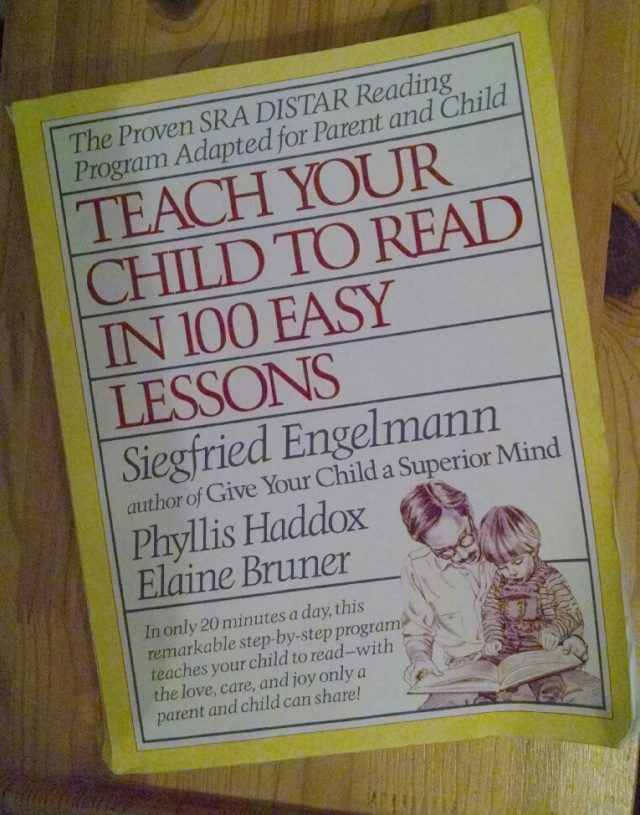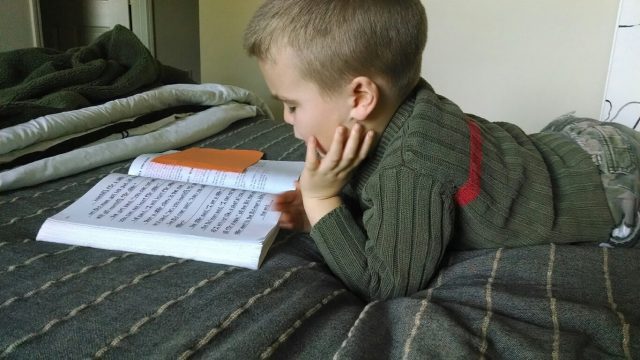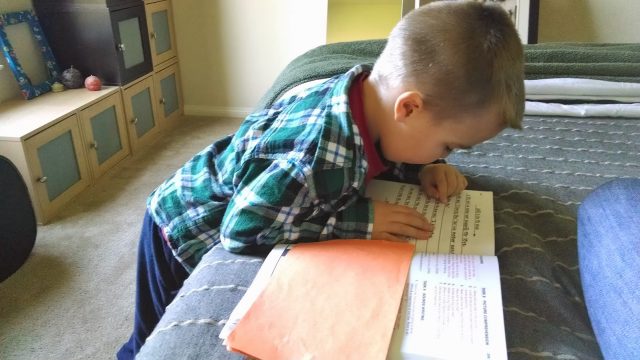One of my favorite things is to teach a child is how to read. How can you not love that look of accomplishment?! That, “I did it!” moment.
It all starts for me about 25 years ago when my mom had this book “Teach Your Child To Read In 100 Easy Lessons” by Siegfied Engelmann sitting in a basket by the side of our couch. I had seen my sister sit with my mom and work through the book a bit every day until she could read. Then she disappeared into the world of books and was I ever inspired and a little jealous. I had to wait until my mom proclaimed me “ready,” then came the day when I began that journey to learn how to read. Pretty soon I too had this gift and precious ability that was all my own, to read what I wanted for myself.
I use the same curriculum for my kids that I learned from and the approach in the book is genius. There are 100 lessons and you do one each day. They take around 15 minutes each so it’s not hard to commit to. A child that is ready developmentally can go from not reading at all to reading at a 2nd grade level in 4-5 months if you’re only using the book Monday-Friday. I’m not affiliated obviously since it was written before I could read. Haha! I’m just trying to share one of my favorite tools for helping kids learn. Another nice feature of this book is that it costs about $15.
People have asked me a lot of questions about how to teach a child to read. The book takes all of the how out of the equation. It is completely scripted for you. The real question is to consider is when to teach your child to read.
First, I wait until the kid wants to read. There’s a lot of reading that goes on in our house. We frequent the library and books are given as cherished presents. We get them books on subjects they are interested in. For my 5 year old boy, that’s sports and science stuff mostly. For my 9 year old girl, that’s poetry, biographies, science, kid’s novels, and mysteries among other things. For the 2 year old, almost anything. They are always trying new kinds of books on new topics. We read to them a lot and we all love reading so it’s not hard to pass the love on.
I also wait to begin the process until they are emotionally equipped to deal with the frustration of it. If I wanted to, I could teach my almost three year old every sound of every letter in the alphabet. The next logical step is to teach her to blend those sounds together and sound out words. But I do not teach them to read at this stage! When we do learn at that stage, it’s formatted as an exciting discovery, a tidbit of information, or a game. I do it when they and I am at our best, whatever time of day that is.
The thing I am a stickler about is that when you do teach them letter sounds it must be correctly. Instead of saying, for example, a hard emphasized “tuh” or “tih” for the letter T sound, you would say a softer very short “t.” That is the actual sound in a word and it doesn’t sound quite right to us without a vowel sound after it. Think about it though… You don’t sound out the word “cat” like “cuh-a-tuh.” Your child, when learning how to read, will try to sound it out like that if you’ve introduced letter sounds wrong. If you need more help with this, the book I mentioned above goes into it in greater detail. Also, there is a video that does a great job of teaching correct letter sounds to kids, “The Letter Factory” by Leapfrog.
Learning to read is hard work and the child has to be ready to work hard. I could tell that my son, at 4 years old, was not ready yet. He wanted to read, he asked to be taught, he was very familiar with all his letter sounds, but he needed to develop more in the area of working through frustrating situations. Before this crucial development, school needed to be more play than work. It was fun. That was the whole point.
But gradually when we felt he was ready, he was almost 5, he began to have a small amount of structure. Every school day now he does some work in a math book, and he does his reading lesson. He likes to be involved in my 4th graders science and history classes, so I do these for both of them. But now he is at the point when he is ready with support and encouragement to take on a challenge.
The book goes into detail about how to correct a child when they are wrong and how to encourage your child on a hard day. Addressing these in a healthy way will help your child in shaping how they push through all frustrating things to accomplish something incredible. When Israel has a rough reading day, I tell him I was proud of how hard I saw him work and I tell him that I’m glad he’s learning such a big thing that it’s really hard. I tell him I know he’s going to do great if he just keeps at it.
People talk a lot about the difference between teaching a boy and teaching a girl. I haven’t experienced that much but I do notice that my boy wiggles like a crazy person during his reading lesson. So far the tactic is to let him stand while reading. It helps.
